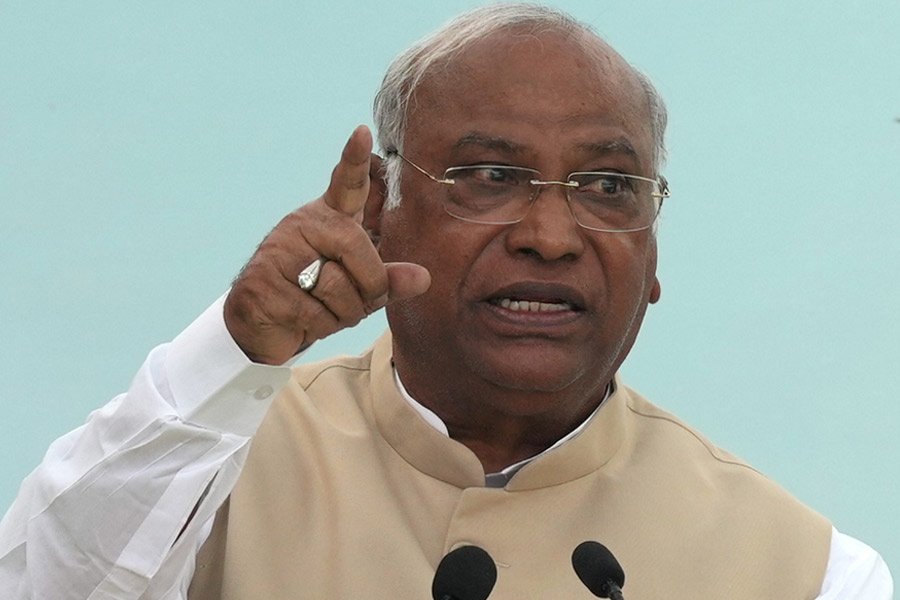 |  |
 | LIFE IN CELLULOID: Guru Dutt (above) and snapshots from his album (left) Photos courtesy Guru Dutt Films Pvt. Ltd |
The rather cramped hall in suburban Andheri could be a scene out of a Guru Dutt film. The hall is awash in darkness and light, and from one corner, a kirtani tune wafts in. A dozen odd musicians are immersed in that S.D. Burman gem from Pyaasa: Aaj sajan mohe ang laga lo. Arun Dutt, battling an army of mosquitoes, takes out his visiting card ? a piece of paper that sums up a golden chapter of Indian cinema. Printed in a golden box on the left of the black card are the words: ?50 years ? 1954-2004?. There are photographs of Guru Dutt, Geeta Dutt and their elder son, Tarun, on a strip of silver celluloid next to the letters: Guru Dutt Films Private Limited. The card has the name of Guru Dutt?s younger son printed above the designation ? director ? with a Pune address. But the world, to be honest, doesn?t quite know him as a director. Arun Dutt made an ?action? film called Khule Aam under his father?s famous banner and faded from public memory after it flopped in December, 1992. But, Arun Dutt is not in Mumbai as a director. Right now, he is here as a director?s son, hoping to put the legendary Guru Dutt film banner back into the spotlight and ensure it stays there. Fifty years after Guru Dutt started his own production house, son Arun ? along with other fans and relatives ? is planning a gala celebration of Guru Dutt?s cinema. Not that Arun remembers his father ever talking to him about cinema. He was, after all, only eight when Guru Dutt died an |
Since then, the family has mostly kept away from the arclights. Like Arun, brother Tarun made just one film ? Bindiya Chamkegi ? in the 1980s. Tarun died young, and, like his father, is said to have committed suicide. Sister Nina, who lives in Pune, briefly made news as a would-be singer in the late-Nineties.
The Dutts are now back in the news, 40 years after Guru Dutt?s death. On Sunday, the now famous set of Kaagaz Ke Phool would be recreated as a tribute to Guru Dutt in Mumbai?s swanky Grand Maratha Hotel. Singers such as Sunidhi Chauhan, Sudesh Bhonsle and Sadhana Sargam would sing 16 selected melodies from Guru Dutt?s films. Friend Shammi Kapoor will release a special commemorative stamp.
Slated to be present at the function are those closely associated with Guru Dutt?s creative unit: his five surviving heroines, Waheeda Rehman, Mala Sinha, Kum Kum, Shyama and Shakeela; cinematographer V.K. Murthy, script-writer Abrar Alvi, and radio publicist Ameen Sayani, who handled publicity for some of Guru Dutt?s hit films.
Music director Bhupen Hazarika is going to release a special four-CD pack of songs from Guru Dutt?s films brought out by HMV. A 20-minute film made by Harish Bhimani will be screened before TV anchor Annu Kapoor takes the audience through a musical extravaganza, highlighting various aspects of Guru Dutt?s film career.
?We have also planned an exhibition of still photographs capturing my father?s personal life and film career,? says 48-year-old Arun Dutt, who has been supervising the show with his painter-aunt Lalita Lajmi, her daughter, filmmaker Kalpana Lajmi, and Kalpana?s partner, Bhupen Hazarika.
Born on July 9, 1925, in Bangalore, Guru Dutt was the eldest of five children born to Vasanti and Shivkumar Padukone, a Burma Shell employee. The Padukones ? Kannadiga Saraswats from Karwar, a beautiful coastal town in Karnataka ? spent more than a decade in Bhawanipore in Calcutta, where Guru Dutt finished his schooling. Not surprisingly, Guru Dutt spoke fluent Bengali and carried a distinct stamp of Bengali culture in his work.
?There was a lot of Bengaliness in his films,? asserts Guru Dutt?s cousin Shyam Benegal. ?He was seeped in Bengali lore.?
As a child, Guru Dutt was fond of two things: dance and animals. His affection for animals stayed with him all his life ? he even went on to set up a mini zoo, complete with a baby chimpanzee and a tiger cub, at his bungalow on Pali Hill. But it was his love for dance that laid the foundation of a career in cinema.
Lalita Lajmi, Guru Dutt?s sister seven and half years younger than him, recalls a painting done by their commercial artist uncle, B.B. Benegal, which had a large snake coiled around a man. Fourteen-year-old Guru Dutt was fascinated by it, and decided to create a snake charmer?s dance around it. ?The family didn?t know about his talent till he performed the dance during a family outing,? Lajmi recalls. ?Uncle Benegal had even filmed that dance on a 16mm camera, but we have lost the film.?
Benegal ? Bakutmam to the young Dutts ? took him to dancer-choreographer Uday Shankar. And 16-year-old Guru Dutt joined Shankar?s dance academy in Almora on a scholarship of Rs 75.
The dance troupe was disbanded during the Second World War because of financial problems, and Guru Dutt finally joined V. Shantaram?s Prabhat Film Company, then a formidable film production house, in 1945. It was here that he met three of his close friends, actors Dev Anand and Rehman and director Raj Khosla, all on Prabhat rolls then.
Legend has it that the friends decided that whoever made it big in the film industry would give a break to the others. While Guru Dutt worked as a dance director and assistant director in Prabhat films, Dev Anand made a name for himself ? and kept his promise. When he formed his own company, Navketan Films, he offered Guru Dutt his debut film, Baazi, in 1951.
It was during the recording of Tadbeer se bigadi hui taqdeer bana de in the film that Guru Dutt first met Geeta Roy, who was then already a top singer. Guru Dutt lived in Matunga then, and Geeta Roy?s house was a few minutes away. ?I acted as a courier between them, taking their first love letters to each other,? says Lajmi.
Dev Anand-Guru Dutt repeated their magic at the box office with breezy crime-based thrillers like Jaal (1952) and CID (1956). Guru Dutt formed his own banner and made Baaz (1953), Aar Paar (1954) and Mr and Mrs 55 (1955).
But it was the entry of writer Abrar Alvi and cinematographer V.K. Murthy into Guru Dutt Films that changed the tenor of his cinema. ?Guru Dutt never repeated a writer till I joined him in Aar Paar. After that, he never hired another writer,? says 78-year-old Abrar Alvi.
Together, they created some of India's most admired films ? Pyaasa (1957), Kaagaz Ke Phool (1959) and Sahib Bibi Aur Ghulam (1962). While Pyaasa and Sahib Bibi Aur Ghulam did well at the box office, it was the failure of Kaagaz Ke Phool, the semi-autobiographical story of a sensitive filmmaker who refuses to stand up to the pretentiousness of the tinsel world ? that broke Guru Dutt.
?I met him at the premiere of the film and I could see him visibly sad at the rejection of his film. Audiences in Delhi?s Regal cinema threw stones at the screen during the screening. Reactions like these affected him deeply,? recalls Lajmi.
That was also when Guru Dutt?s personal life was in a shambles, torn apart by a brief affair with the actress Waheeda Rehman, who first starred in CID as a vamp, and then in his three best films. Waheeda?s decision to do films with other directors, his separation from his wife and children and a history of acute depression ? he had twice attempted suicide ? are widely believed to be the reasons behind Guru Dutt?s death.
Some of the mysteries that surround Guru Dutt?s life may find an answer in a new book edited by London-based Nasreen Munni Kabir, who made the documentary, In Search of Guru Dutt, for UK?s Channel 4, and wrote the 1996 book, Guru Dutt: A life in cinema.
?The book is a compilation of 60 personal letters written by my father to my mother. They date from 1951 when they first met to 1962,? says Arun. ?The correspondence will throw new light on several aspects of their relationship. I think my father may also face some criticism,? says Dutt, who also plans to organise a similar tribute to his mother next year.
The book will be out in January next year. Till then, perhaps, Guru Dutt?s life will remain the shadowy grey of his black and white lighting.










